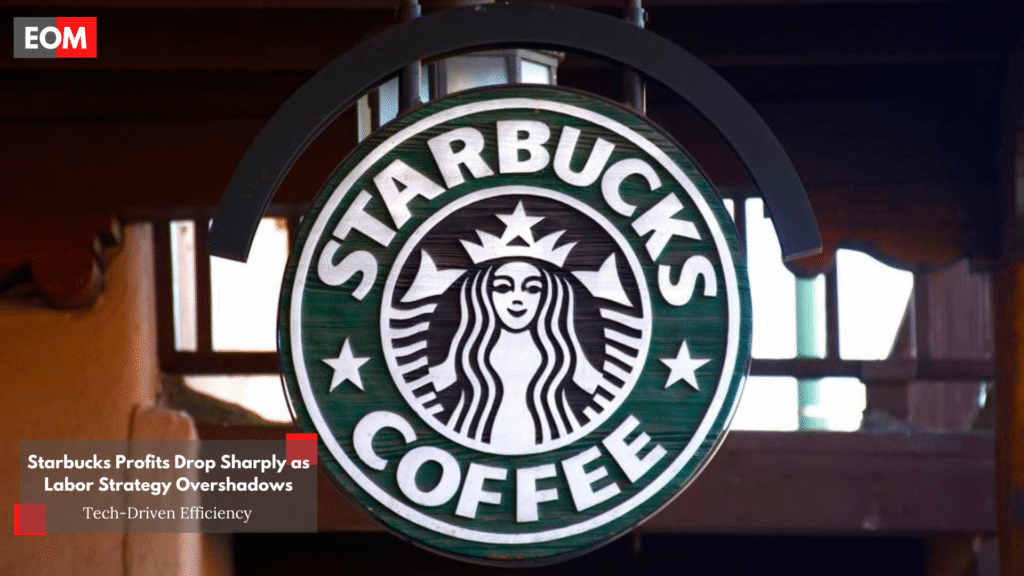Starbucks Profits Drop Sharply as Labor Strategy Overshadows Tech-Driven Efficiency

Seattle, WA – July 2025
Starbucks Corporation has reported a steep decline in profits, underscoring the financial strain of its strategic pivot away from automation and toward labor-centric operational improvements. While the global coffee giant delivered a 2% year-over-year increase in revenue to $8.8 billion for the quarter ending in March—meeting Wall Street expectations—net income plunged 50% to $384.2 million, well below the $551 million forecast by analysts surveyed by Visible Alpha.
This marks the fifth consecutive quarter of declining comparable store sales, prompting fresh concerns about the efficacy and timeline of the company’s turnaround strategy.
CEO Brian Niccol Bets on People Over Technology
Under the leadership of CEO Brian Niccol, Starbucks is shelving parts of its Siren Craft System—a high-tech operational overhaul launched in 2022—in favor of reinvesting in its frontline workforce. Niccol, formerly an executive at Taco Bell and Chipotle, has emphasized that customer satisfaction hinges more on human engagement than on technological upgrades.
“We’ve learned that investing in our people—not just equipment—is more effective at improving throughput and customer loyalty,” said Niccol during the earnings call.
This shift, while culturally resonant, has increased operational costs. Store-related expenses surged 12.1% to $4.2 billion this quarter, largely due to increased staffing and training programs. Starbucks’ global workforce of 361,000 employees, the majority of whom are baristas, has grown as the company addresses customer complaints of long wait times and understaffed stores, particularly during peak hours.
Expansion Continues Despite Pressure on Margins
In parallel with its labor-first turnaround plan, Starbucks is also pursuing international expansion, adding 213 net new stores in Q2 and bringing its global footprint to 40,789 locations. However, CFO Cathy Smith acknowledged that Starbucks is now reviewing its real estate pipeline to ensure that new locations yield acceptable margins amid rising costs.
Following the earnings announcement, Starbucks shares dropped nearly 7% in after-hours trading, reflecting investor skepticism about short-term recovery.
Rising Input Costs Add Further Complexity
External pressures are further compounding Starbucks’ margin challenges. Coffee prices have climbed above $4 per pound, driven by supply volatility in major producing countries like Brazil and Colombia. Compounding matters, new tariffs enacted under the Trump administration threaten to increase import costs even further. Coffee beans represent approximately 15% of Starbucks’ cost of goods sold, making the company vulnerable to price swings in commodity markets.
In the U.S., transaction volumes fell 4% year-over-year, indicating a deeper consumer slowdown that may take time to reverse, even with improved in-store service. Globally, comparable store sales fell 1%, reinforcing that Starbucks’ growth story is being challenged on both revenue and cost fronts.
Outlook: Patience Required for a Cultural Reset
While Starbucks’ short-term financial performance reflects a company in transition, CEO Niccol remains confident that the labor investment strategy will pay off over time. However, analysts warn that a 50% drop in net income is a stark signal that the benefits of the turnaround plan have not yet materialized at the bottom line.
For now, Starbucks is asking investors to trust in a long-term reset focused on employee engagement, customer experience, and operational consistency—a shift that could eventually yield stronger brand equity, even if it dents margins in the near term.

